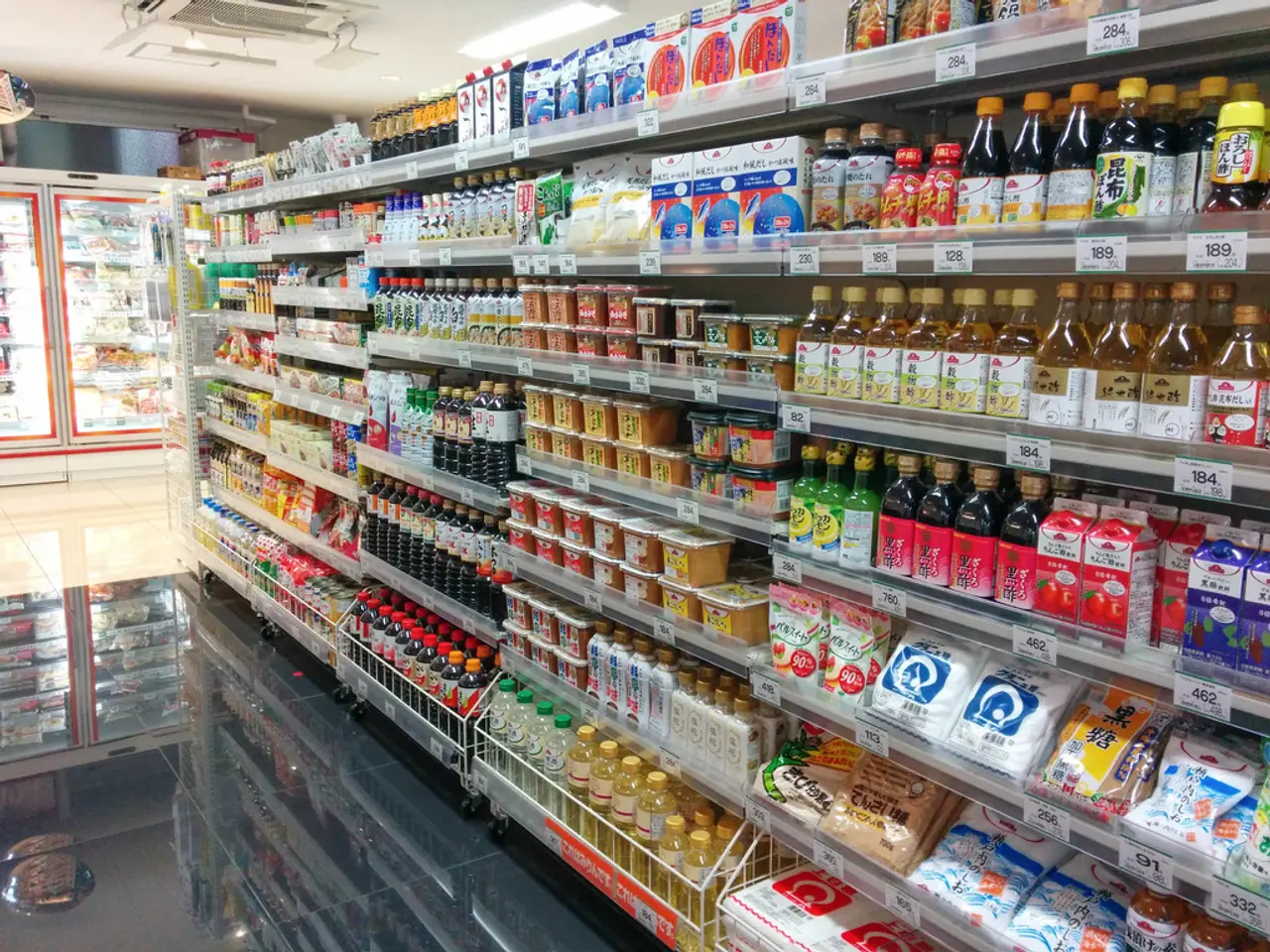Direct-to-consumer (DTC) companies' strategies for in-person sales in 2021
In the ever-evolving retail landscape, Direct-to-Consumer (DTC) brands are making a significant shift towards physical stores, leveraging the benefits they offer while navigating potential drawbacks.
**Benefits of Direct-to-Consumer (DTC) Brands Opening Physical Stores**
1. Enhanced Customer Loyalty: By providing an immersive experience, DTC brands can forge stronger emotional connections with customers, fostering increased loyalty[1]. 2. Omnichannel Experience: Integrating online and offline data enables personalised customer interactions, enhancing the overall brand experience and customer retention[1]. 3. Immediate Feedback and Data Collection: Physical stores offer invaluable insights into customer preferences and market trends, crucial for product development and market responsiveness[2]. 4. Brand Visibility and Awareness: A physical presence boosts brand visibility, making it more attractive to potential partners and customers[2].
**Potential Drawbacks of Direct-to-Consumer (DTC) Brands Opening Physical Stores**
1. Higher Operational Costs: Maintaining physical stores adds to operational expenses, including rent, staffing, and inventory management[3]. 2. Increased Complexity: Managing both online and offline channels can complicate business operations, requiring more resources for inventory management, staffing, and customer service[3]. 3. Competition and Market Saturation: The retail industry is increasingly saturated, making it challenging for DTC brands to stand out and attract customers in a crowded market[3]. 4. Risks of Cannibalization: There is a risk that opening physical stores could cannibalize online sales, though this can often be mitigated by ensuring that both channels complement each other[2].
Amidst the shifting retail landscape, DTC brands are seizing opportunities presented by the pandemic. With consumers spending more time online, these brands have found a chance to gain a foothold in the physical world[7]. E-commerce sales surged, with March 2021 figures jumping to $70.1 billion, up 18.2% from the prior year[8].
However, the move towards physical stores brings new challenges. DTC brands must rethink their operating models and supply chains to accommodate merchandise in stores[6]. The "right number" of stores for a DTC brand lies somewhere in the 200 to 400 range, but it also depends on the category in which the brand operates[9].
In the face of these changes, landlords are offering concessions to attract good credit tenants with successful operational histories[4]. Brick-and-mortar stores are considered "brand-building locations" by industry experts[5]. As consumers move out of cities and to the suburbs, DTC brands are following suit, focusing on premium suburban high streets and pedestrian retail streets[10].
The retail industry is experiencing a shift back to urban markets once consumers begin moving back to cities[11]. However, DTC brands are unlikely to move into large, high-profile urban locations due to significant operating costs[10]. Instead, they are opting for smaller, strategic locations that cater to their unique needs, such as showroom, inventory-free models.
Several retailers, including At Home and Target, have ramped up fulfillment options like curbside and in-store pickup to meet the increased demand to their digital channels[12]. Lowe's announced it would introduce pickup lockers to most metro areas by the Thanksgiving holiday.
As the number of deals being made by DTC brands is expected to accelerate to pre-pandemic levels in the months ahead, brands should be looking to forge deals with landlords now[13]. The smart landlords will be doing long-term deals and leveraging the opportunities available now with concessions.
In conclusion, the rise of DTC brands in physical retail offers a blend of opportunities and challenges. By understanding these factors, DTC brands can navigate the landscape effectively and capitalise on the unique value that brick-and-mortar stores provide.
[1] [The Benefits of Direct-to-Consumer Retail](https://www.forbes.com/sites/forbesagencycouncil/2019/08/19/the-benefits-of-direct-to-consumer-retail/?sh=69c0e88e708d) [2] [Why DTC Brands Are Opening Physical Stores](https://www.entrepreneur.com/article/353639) [3] [The Risks and Rewards of DTC Brands Opening Physical Stores](https://www.retaildive.com/news/the-risks-and-rewards-of-dtc-brands-opening-physical-stores/567102/) [4] [Landlords Offer Concessions to Attract DTC Brands](https://www.retaildive.com/news/landlords-offer-concessions-to-attract-dtc-brands/593706/) [5] [Brick-and-Mortar Stores: A Valuable Asset for DTC Brands](https://www.retaildive.com/news/brick-and-mortar-stores-a-valuable-asset-for-dtc-brands/593706/) [6] [DTC Brands Face Challenges in Adapting to Physical Stores](https://www.retaildive.com/news/dtc-brands-face-challenges-in-adapting-to-physical-stores/593706/) [7] [The Pandemic Pushed DTC Brands to Open Physical Stores](https://www.retaildive.com/news/the-pandemic-pushed-dtc-brands-to-open-physical-stores/593706/) [8] [E-commerce Sales Jump in March 2021](https://www.cnbc.com/2021/04/15/us-retail-sales-surge-in-march-as-consumers-spend-more-online.html) [9] [The Right Number of Stores for a DTC Brand](https://www.retaildive.com/news/the-right-number-of-stores-for-a-dtc-brand/593706/) [10] [DTC Brands Focus on Suburban High Streets](https://www.retaildive.com/news/dtc-brands-focus-on-suburban-high-streets/593706/) [11] [The Focus Shifts Back to Urban Markets](https://www.retaildive.com/news/the-focus-shifts-back-to-urban-markets/593706/) [12] [Retailers Ramp Up Fulfillment Options](https://www.retaildive.com/news/retailers-ramp-up-fulfillment-options/593706/) [13] [Brands Should Seek Deals with Landlords Now](https://www.retaildive.com/news/brands-should-seek-deals-with-landlords-now/593706/)
- DTC brands might find inspiration in fusion of fashion and culture while opening physical stores, as these elements often attract customers seeking unique, experiential shopping experiences.
- In addition to navigating market trends, DTC brands must stay alert to changes in government policies that could impact supply chains, such as import taxes or labor laws.
- As the popularity of AI-powered recommendation systems grows, DTC brands may implement such tools in their physical stores, aiming to personalize the shopping experience and drive sales.
- Some DTC brands may explore partnerships with TV networks or streaming services to gain exposure and increase brand appeal, as consumers increasingly prioritize lifestyle brands with strong cultural resonance.
- In an effort to combat inflation and maintain financial stability, DTC brands might consider updating their pricing strategies, focusing on offering competitive deals and promotions that appeal to budget-conscious consumers.
- To stay competitive, DTC brands should monitor sports sponsorship trends and consider leveraging sports marketing to boost brand awareness and attract a broader customer base.
- As technology continues to transform the retail sector, DTC brands will need to prioritize research and development initiatives aimed at improving the overall shopping experience, from in-store tech integrations to innovative product designs.
- To reinforce the connection between their online and offline presence, DTC brands could collaborate with vaccine distribution centers or health organizations, offering incentives like discounts or exclusive products to vaccinated customers.
- To further distinguish themselves from competitors, DTC brands could prioritize offering sustainable, eco-friendly products or incorporating environmentally-conscious practices into their operations and store design.
- Keeping an eye on spaces that allow for innovation, such as exclusive shopping malls, design collaborations, and pop-up shops, will enable DTC brands to stay relevant and capitalize on emerging retail trends.




